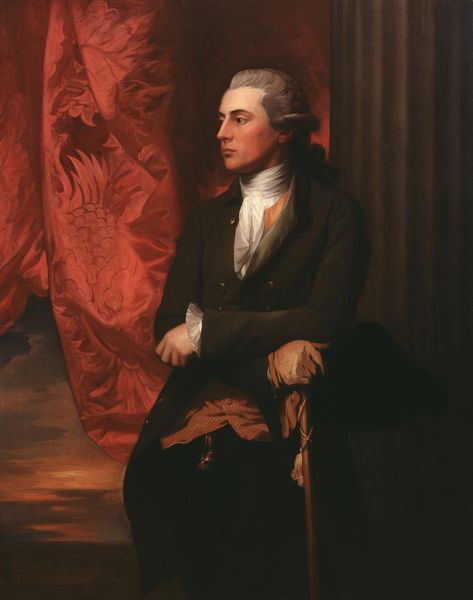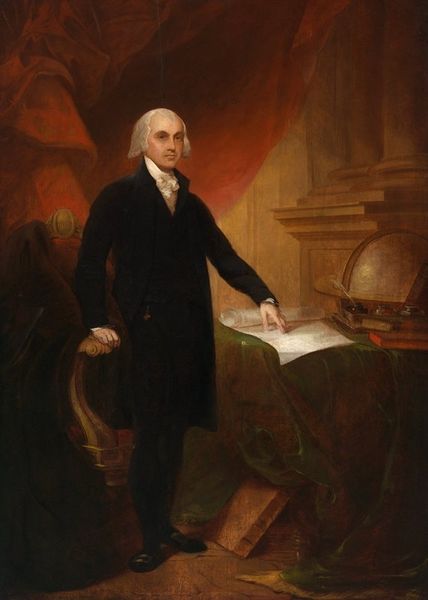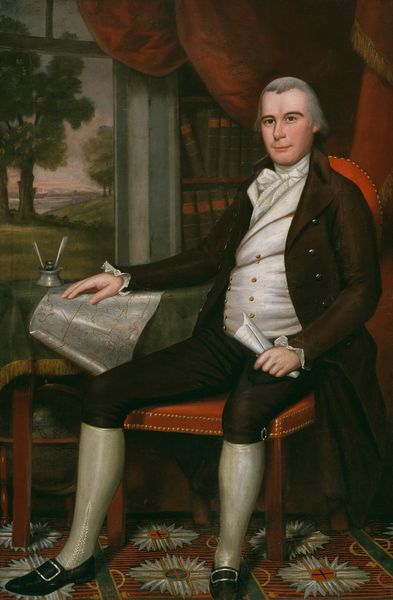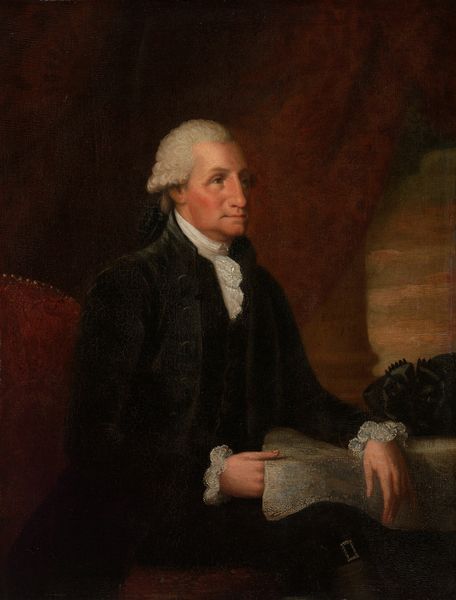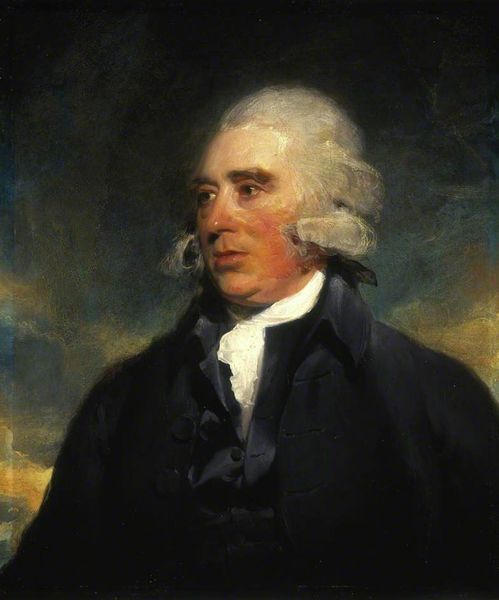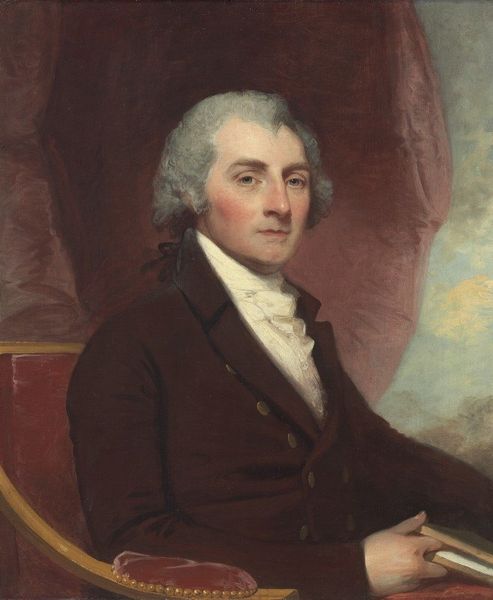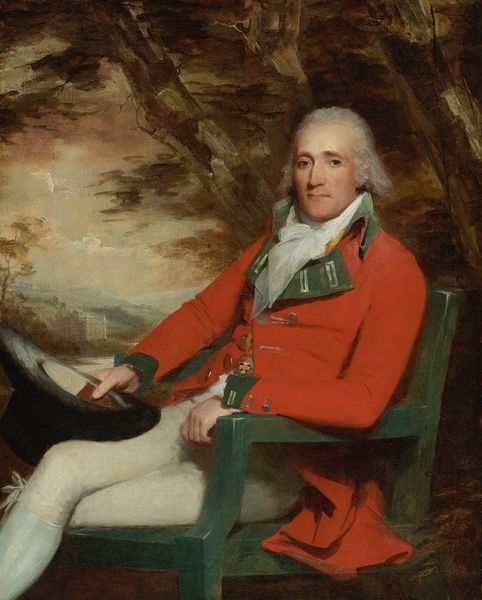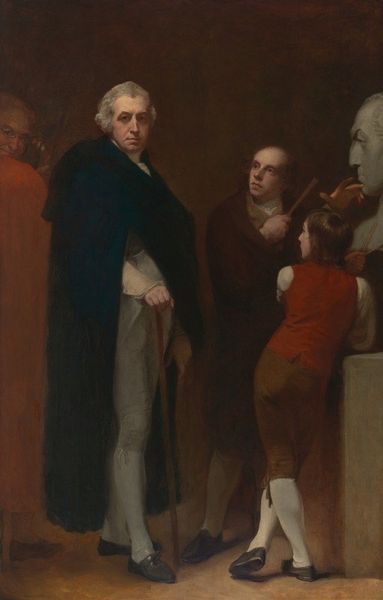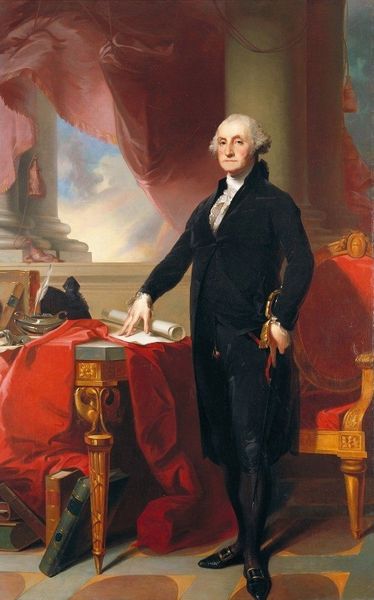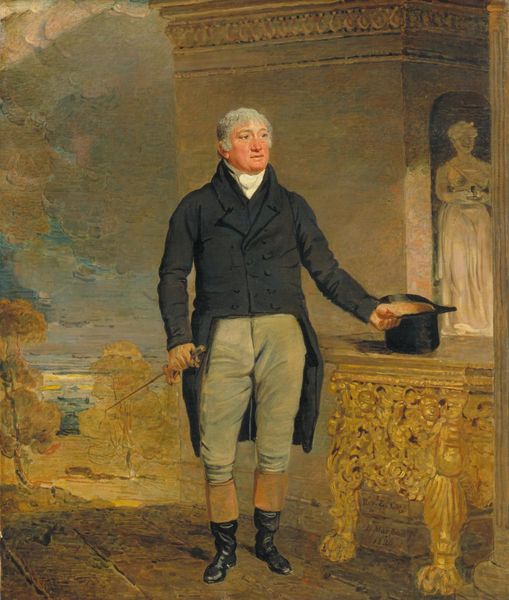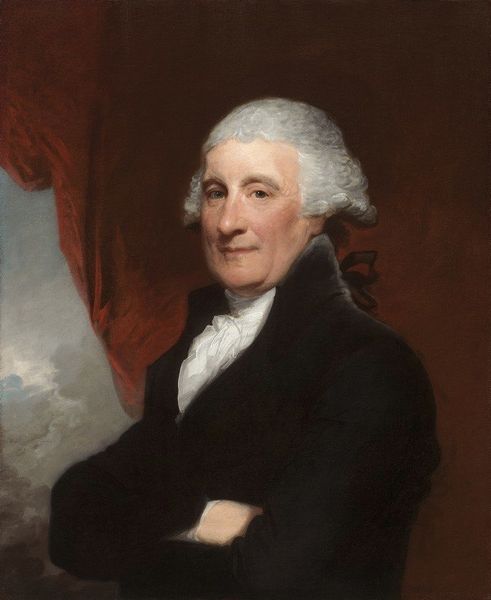
painting, oil-paint
#
portrait
#
figurative
#
neoclacissism
#
narrative-art
#
painting
#
oil-paint
#
portrait subject
#
portrait drawing
#
history-painting
#
academic-art
Copyright: Public Domain: Artvee
Benjamin West painted this portrait of John Eardley Wilmot in the late 18th or early 19th century. Wilmot sits before us, but behind him is a painting of a complex scene. What could it mean? Well, it seems to depict Wilmot’s work with the Royal Commission on American Loyalists. This was a British government body that awarded compensation to colonists who had remained loyal to the crown during the American Revolution. In the background painting, we can see allegorical figures of Justice and Britannia, as well as suffering American Loyalists. West was a hugely important figure in the art world. He was an American expatriate who became president of the Royal Academy in London. Portraits like this one tell us a lot about the social role of art in Britain at the time. They show how art was used to promote political ideas and memorialize historical events. If we want to understand it better, we might look at the records of the Royal Academy, or the documents of the Royal Commission itself.
Comments
No comments
Be the first to comment and join the conversation on the ultimate creative platform.
